Prochloraz
- CAS No.
- 67747-09-5
- Chemical Name:
- Prochloraz
- Synonyms
- MASTER;Procloraz;n-propyl-n-(2,4,6-trichlorophenoxy)ethyl-imidazole-1-carboxamide;1-(n-propyl-n-(2-(2,4,6-trichlorophenoxy)ethyl)carbamoyl)imidazole;P-242;octave;FORTAK;EYETAK;Abarit;KI 835
- CBNumber:
- CB0130169
- Molecular Formula:
- C15H16Cl3N3O2
- Molecular Weight:
- 376.67
- MDL Number:
- MFCD00078735
- MOL File:
- 67747-09-5.mol
| Melting point | 46-49°C |
|---|---|
| Boiling point | 360℃ |
| Density | 1.405 |
| vapor pressure | 1.5 x l0-4 Pa (25 °C) |
| refractive index | 1.6490 (estimate) |
| Flash point | 2 °C |
| storage temp. | Sealed in dry,2-8°C |
| solubility | DMF: 30 mg/ml; DMSO: 30 mg/ml; Ethanol: 30 mg/ml; Ethanol:PBS(pH 7.2) (1:1): 0.5 mg/ml |
| pka | 3.8 (weak base) |
| Water Solubility | 34.4 mg l-1 (25 °C) |
| color | White to Light yellow to Light orange |
| Merck | 14,7760 |
| BRN | 8155344 |
| InChIKey | TVLSRXXIMLFWEO-UHFFFAOYSA-N |
| LogP | 4.100 |
| CAS DataBase Reference | 67747-09-5(CAS DataBase Reference) |
| FDA UNII | 99SFL01YCL |
| NIST Chemistry Reference | Prochloraz(67747-09-5) |
| EPA Substance Registry System | Prochloraz (67747-09-5) |
SAFETY
Risk and Safety Statements
| Symbol(GHS) |   GHS07,GHS09 |
|||||||||
|---|---|---|---|---|---|---|---|---|---|---|
| Signal word | Warning | |||||||||
| Hazard statements | H302-H410 | |||||||||
| Precautionary statements | P273-P301+P312+P330 | |||||||||
| Hazard Codes | Xn;N,N,Xn,F | |||||||||
| Risk Statements | 22-50/53-36-20/21/22-11 | |||||||||
| Safety Statements | 60-61-36/37-26 | |||||||||
| RIDADR | UN 3077 | |||||||||
| WGK Germany | 3 | |||||||||
| RTECS | NI4000400 | |||||||||
| HazardClass | 9 | |||||||||
| PackingGroup | III | |||||||||
| HS Code | 29332900 | |||||||||
| Toxicity | LD50 in rats (mg/kg): 1600 orally; >5000 s.c.; 400-800 i.p.; LC50 (96 hour) in rainbow trout, bluegill (mg/l): 1, 2.2 (de Saint-Blanquat, My) | |||||||||
| NFPA 704 |
|
Prochloraz price More Price(22)
| Manufacturer | Product number | Product description | CAS number | Packaging | Price | Updated | Buy |
|---|---|---|---|---|---|---|---|
| Sigma-Aldrich | 64947 | Prochloraz certified reference material, TraceCERT | 67747-09-5 | 50mg | $86.6 | 2024-03-01 | Buy |
| Sigma-Aldrich | 45631 | Prochloraz PESTANAL | 67747-09-5 | 250mg | $61 | 2024-03-01 | Buy |
| TCI Chemical | P2137 | Prochloraz >98.0%(HPLC)(N) | 67747-09-5 | 1g | $133 | 2024-03-01 | Buy |
| TCI Chemical | P2137 | Prochloraz >98.0%(HPLC)(N) | 67747-09-5 | 5g | $450 | 2024-03-01 | Buy |
| Cayman Chemical | 24051 | Prochloraz | 67747-09-5 | 100mg | $26 | 2024-03-01 | Buy |
Prochloraz Chemical Properties,Uses,Production
Overview
Prochloraz is an imidazole fungicide that is widely used in Europe, Australia, Asia and South America within gardening and agriculture[1, 2]. It is used on wheat, barley, mushrooms, cherries, turf on golf courses, and in flower production, for instance, in Ecuador, where roses are treated with prochloraz prior to export to the USA[1, 2]. It was first evaluated by JMPR in 1983 for residues and toxicology, and subsequently six additional reviews of residues have been carried out between 1985 and 1992. Under the CCPR Periodic Review Programme the toxicology was re-evaluated in 2001, when an ADI of 0– 0.01 mg/kg bw and an ARfD of 0.1 mg/kg/bw were established. In 2004, a Periodic Review of the residue and analytical aspects of prochloraz was conducted.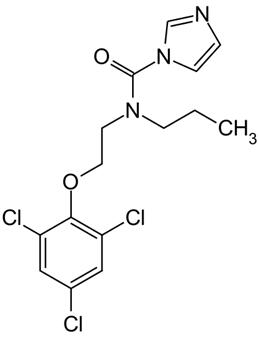
Figure 1 the chemical structure of prochloraz
Applications
Prochloraz is a fungicide active against a wide range of diseases affecting cereals, field crops, fruit and many other crops[3]. It can be used for the control of pests including anthracnose, dothiorella complex, stem-end rot, and eyespot. It can be applied in fruits and fields including field crops; mushrooms; turf; avocados; Mangoes; Cereals including wheat, barley, and winter rye as well as winter oilseed rape[3].
Mode of action
The action of imidazoles used as fungicides or antimycotic drugs (e.g. ketoconazole) is based on the inhibition of the cytochrome P450-dependent 14a-deme- thylase activity required in the conversion of lanosterol to ergosterol[4], an essential component of fungal cell membranes. The molecular basis of this inhibition is the presence of an imidazole moiety that interacts strongly with the iron atom of cytochrome P450. The binding is fairly unspecific and thus imidazole fungicides also inhibit the activities of a broad spectrum of other cytochrome P450-dependent enzymes, including key enzymes involved in biosynthesis and metabolism of steroids, e.g. CYP19 aromatase[5].
Physiological effect
Prochloraz is a currently used imidazole fungicide that shows multiple mechanisms of endocrine action in vitro. It is a novel endocrine disruptor that is mechanistically interesting as it elicits dual mechanisms of action and acts as an antiandrogen both by blocking AR, like the well-known fungicides vinclozolin and procymidone, and by inhibiting fetal steroidogenesis like the phthalates. However, the mechanism of action of prochloraz differs from that of the phthalates, as steroidogenesis seems to be directly inhibited by prochloraz possibly at the 17a-hydroxylase/lyase level. Several of the observed in vivo effects can be explained by this disruption of fetal steroidogenesis: (i) the increased pregnancy length of the dams; (ii) the reduced testosterone and increased progesterone in male foetuses; and (iii) the feminized behaviour of adult males[6-9].
Prochloraz acted as an ER and AR antagonist as well as an aromatase inhibitor with IC50 (the concentration that induces half-maximal inhibition of activity) values of 25, 4 and 0.3 lm respectively. Furthermore, prochloraz was able to activate the aryl hydrocarbon receptor (AhR) having an EC50 (the effective concentration that induces half- maximal activation) of 1 lm. The antioestrogenic effects were evident both in a MCF7 cell proliferation assay and in an ER reporter gene assay. Although the potencies of prochloraz to antagonize ER and AR, agonize AhR, and to inhibit aromatase are relatively weak, the ability of prochloraz to act via more than one mechanism might enhance the biological effect in the intact organism, as the final response may be determined by the interactions of all pathways involved[10-12].
The in vivo effect of prochloraz is in agreement with the AR antagonism observed in vitro. Comparing the in vivo effect of prochloraz to the well-known AR antagonist vinclozolin shows that the magnitude of the response to prochloraz is within the range of 26–65% of the response to vinclozolin when organ weight changes is the selected end point. p,p’-DDE at a dose level of 50 mg/kg did not significantly reduce prostate weight, and therefore the effect of prochloraz in the Hershberger assay is intermediate to that of vinclozolin and p,p’-DDE. The in vitro transcriptional assay showed that prochloraz acted as an AR antagonist having an IC50 of 4–8 lm depending on the androgen concentration. For comparison the IC50 of vinclozolin and p,p’-DDE in our AR assay is approximately 10-fold lower, being around 0.4 and 0.3 lm respectively. Thus, compared with relations between potencies observed in vitro and in vivo for other antiandrogens, the in vivo response induced by prochloraz in the Hershberger assay was higher than predicted from the in vitro assay[8].
Toxicity
Absorption of prochloraz via inhalation, ingestion, or direct skin and eye contact may result in certain kinds of adverse reactions. Inhaling toxic fumes may cause severe respiratory irritation, sore throat, and nasal inflammation. Likewise, inhaling the hazardous substance may further exacerbate the condition of people with pre-existing respiratory disorders such as chronic bronchitis and impaired respiratory function.
Prochloraz can also negatively affect the female reproductive health too. Exposure to the harmful compound may lead to mood swings, depression, weight gain, and hot flushes as well as vaginal dryness, bloating, and early menopause. Long-term prochloraz exposure has been found to cause circulatory disorders such as increased blood clots, low blood pressure, blood vessel dilation, and white blood cell death.
The hazardous chemical can also trigger series of other systematic effects such as the onset of bone weakness, mineral imbalance, and cardiovascular damage as well as liver injury, convulsions, and gastrointestinal disturbance. The fungicide is found to seep into open wounds and abrasions as well, which in turn may lead to severe skin irritation and more serious conditions such as severe peripheral neuropathy, limb paralysis, and loss of sensation. Furthermore, direct eye contact may result in severe eye irritation and corneal injury[13].
References
- Bill Carlile (28 September 2006). Pesticide Selectivity, Health and the Environment. Cambridge University Press. pp. 81–. ISBN 978-1-139-45756-9.
- Kalyani Paranjape; Vasant Gowariker; V N Krishnamurthy; Sugha Gowariker (22 December 2014). The Pesticide Encyclopedia. CABI. pp. 406–. ISBN 978-1-78064-014-3.
- https://sitem.herts.ac.uk/aeru/ppdb/en/Reports/536.htm
- Henry, M. J. & Sisler, H. D. (1984) Effects of sterol biosynthesis-inhibiting (SBI) fungicides on cytochrome P-450 oxygenations in fungi. Pesticide Biochemistry and Physiology 22, 262–275.
- Laignelet, L., Narbonne, J. F., Lhuguenot, J. C. & Riviere, J. L. (1989) Induction and inhibition of rat liver cytochrome(s) P-450 by an imidazole fungicide (prochloraz). Toxicology 59, 271–284.
- Christenson, L. K. & Devoto, L. (2003) Cholesterol transport and steroidogenesis by the corpus luteum. Reproductive Biology and Endocrinology 1, 90.
- Wilson, V. S., Lambright, C., Furr, J., Ostby, J., Wood, C., Held, G. & Gray, L. E., Jr (2004) Phthalate ester-induced gebernacular lesions are associated with reduced insl3 gene expression in the fetal rat testis. Toxicology Letters 146, 207– 215.
- Vinggaard, A. M., Nellemann, C., Dalgaard, M., Jorgensen, E. B. & Andersen, H. R. (2002) Antiandrogenic effects in vitro and in vivo of the fungicide prochloraz. Toxicological Sciences 69, 344–353.
- Vinggaard, A. M., Hnida, C., Breinholt, V. & Larsen, J. C. (2000) Screening of selected pesticides for inhibition of CYP19 aromatase activity in vitro. Toxicology In Vitro 14, 227–234.
- Laignelet, L., Rivie`re, J.-L. & Lhuguenot, J.-C. (1992) Metabolism of an imidazole fungicide (prochloraz) in the rat after oral administration. Food and Chemical Toxicology 30, 575–583.
- Andersen, H. R., Vinggaard, A. M., Rasmussen, T. H., Gjermandsen, I. M. & Bonefeld-Jørgensen, E. C. (2002) Effects of currently used pesticides in assays for estrogenicity, androgenicity and aromatase activity in vitro. Toxicology and Applied Pharmacology 179, 1–12.
- Long, M., Laier, P., Vinggaard, A. M., Andersen, H. R., Lynggaard, J. & Bonefeld-Jørgensen, E. C. (2003) Effect of currently used pesticides in the AhR-CALUX assay: comparison between the human TV101L and the rat H4IIE cell line. Toxicology 194, 77–93.
- http://pesticides.news/2017-11-15-prochloraz-toxicity-side-effects-diseases-and-environmental-impacts.html
Chemical Properties
Off-White to Light Tan Solid
Uses
Plocloraz is used as a fungicide. Plocloraz showed efficacy against cereal powdery mildew.
Uses
Prochloraz is a protectant and eradicant fungicide effective against a wide range of diseases affecting field crops, fruit, turf and vegetables. It is recommended for use on cereals against Pseudocercosporella, Pyrenophora, Rhyncosporium and Septoria spp. and on oilseed rape against Alternaria, Botrytis, Pyrenopeziza and Sclerotinia spp. When it is applied as a dip treatment it shows good activity against storage or transit diseases of citrus and tropical fruit. It is also used as a seed treatment to control several diseases of cereals.
Definition
ChEBI: A member of the class of ureas that is 1H-imidazole-1-carboxamide substituted by a propyl and a 2-(2,4,6-trichlorophenoxy)ethyl group at the amino nitrogen atom. A fungicide active against a wide range of diseases affecting field crops, ruit, turf and vegetables.
Agricultural Uses
Fungicide: Plocloraz is fungicide that has shown to be effective against cereal powdery mildew. Not approved for use in EU countries. Not registered for use in the U.S. There are 26 global suppliers.
Trade name
ASCURIT®; BTS40542®; DIBAVIT®; EYETAK®; FORTAK®; FUNCHLORAZ®; GRAIL®; MASTER®; MIRAGE®; MIRAGE® 40 EC; PORAZ®; SPORGON®; SPORTAK®; SPORTAKALPHA®; SPORTAKDELTA®
Metabolic pathway
Prochloraz is metabolised in plants and animals and degrades in soils. The initial step in the metabolic pathway is cleavage of the imidazole ring; the substituted ureas that result are subsequently degraded to moieties containing a chlorophenoxy residue and the ring is hydroxylated. Residues may be conjugated in animals and plants.
Degradation
Prochloraz is stable in water at pH 7 and 20 °C. It decomposes on exposure to sunlight and is also decomposed by concentrated acids and alkalis.
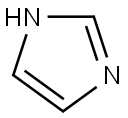

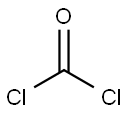

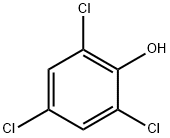
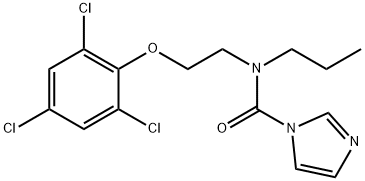
Prochloraz Preparation Products And Raw materials
| Supplier | Tel | Country | ProdList | Advantage | |
|---|---|---|---|---|---|
| Hebei Mojin Biotechnology Co., Ltd | +8613288715578 | sales@hbmojin.com | China | 12456 | 58 |
| Beijing Cooperate Pharmaceutical Co.,Ltd | 010-60279497 | sales01@cooperate-pharm.com | CHINA | 1811 | 55 |
| Henan Tianfu Chemical Co.,Ltd. | +86-0371-55170693 +86-19937530512 | info@tianfuchem.com | China | 21691 | 55 |
| career henan chemical co | +86-0371-86658258 | sales@coreychem.com | China | 29914 | 58 |
| Hubei Jusheng Technology Co.,Ltd. | 18871490254 | linda@hubeijusheng.com | CHINA | 28180 | 58 |
| Hebei Guanlang Biotechnology Co., Ltd. | +86-19930503282 | alice@crovellbio.com | China | 8823 | 58 |
| Xiamen AmoyChem Co., Ltd | +86-592-6051114 +8618959220845 | sales@amoychem.com | China | 6387 | 58 |
| Hubei xin bonus chemical co. LTD | 86-13657291602 | linda@hubeijusheng.com | CHINA | 22968 | 58 |
| Chongqing Chemdad Co., Ltd | +86-023-61398051 +8613650506873 | sales@chemdad.com | China | 39916 | 58 |
| CONIER CHEM AND PHARMA LIMITED | +8618523575427 | sales@conier.com | China | 49390 | 58 |
View Lastest Price from Prochloraz manufacturers
| Image | Update time | Product | Price | Min. Order | Purity | Supply Ability | Manufacturer | |
|---|---|---|---|---|---|---|---|---|
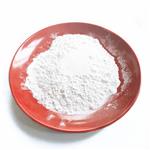 |
2023-08-18 | Prochloraz
67747-09-5
|
US $0.00 / KG | 1KG | 99% | 50000KG/month | Hebei Mojin Biotechnology Co., Ltd | |
 |
2023-03-06 | Prochloraz
67747-09-5
|
US $10.70 / Kg/Drum | 10g | 99% | 10000kg | Hebei Guanlang Biotechnology Co,.LTD | |
 |
2021-10-19 | Prochloraz
67747-09-5
|
US $9.90 / KG | 1KG | 99% | 5tons | Hebei Guanlang Biotechnology Co., Ltd. |
-

- Prochloraz
67747-09-5
- US $0.00 / KG
- 99%
- Hebei Mojin Biotechnology Co., Ltd
-

- Prochloraz
67747-09-5
- US $10.70 / Kg/Drum
- 99%
- Hebei Guanlang Biotechnology Co,.LTD
-

- Prochloraz
67747-09-5
- US $9.90 / KG
- 99%
- Hebei Guanlang Biotechnology Co., Ltd.
67747-09-5(Prochloraz)Related Search:
1of4





